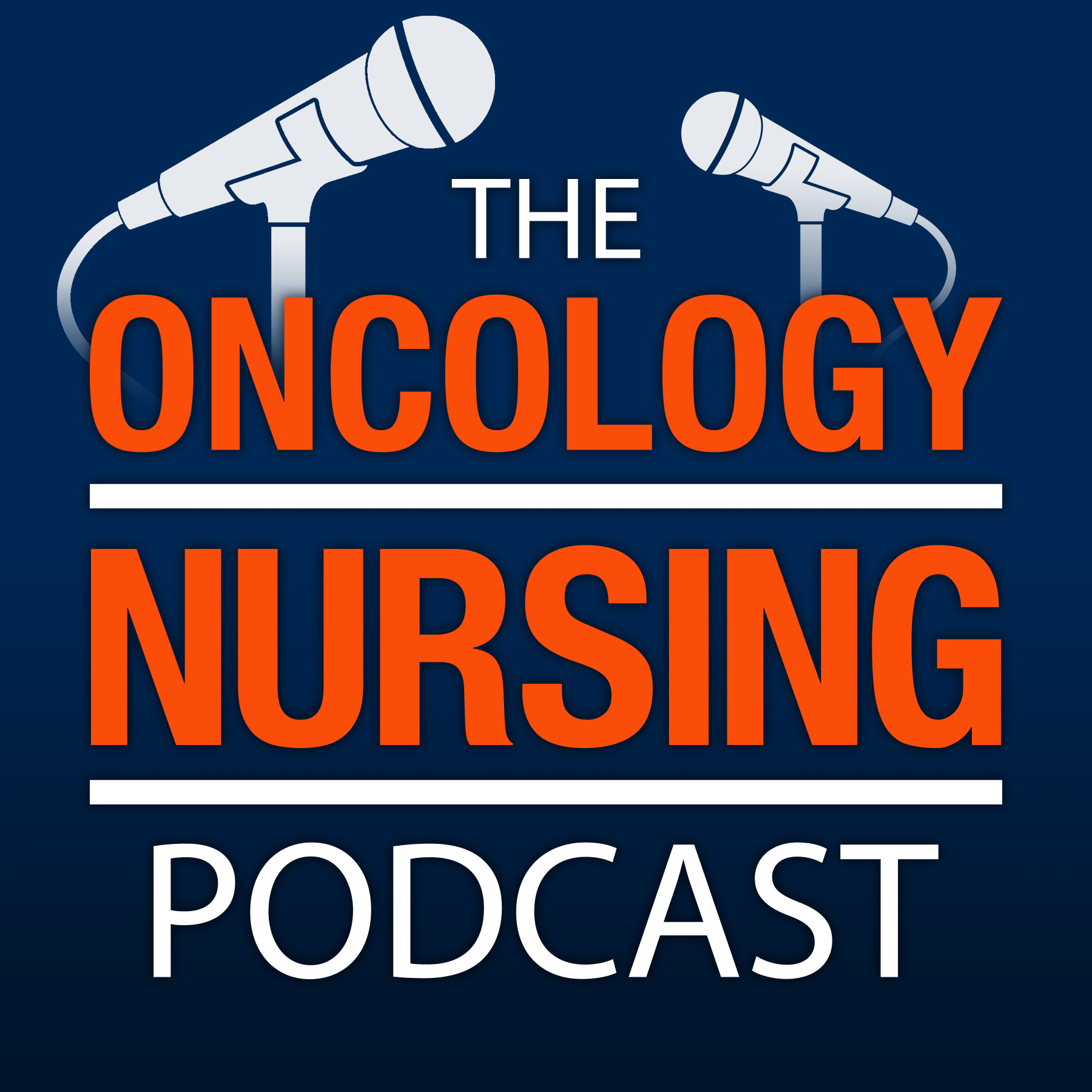Episode 313: Cancer Symptom Management Basics: Other Pulmonary Complications
Description
“Of all the eight different pulmonary toxicities you and I have talked about over these two different podcasts, they’re all very different etiologies and treatments. So, we went everywhere from infection and good stewardship with antibiotics to pulmonary GVHD to diffuse alveolar hemorrhage. And I think that’s what’s the hardest part for us as nurses. It’s not just one thing that’s causing it, and there’s multiple different ways to treat these things,” Beth Sandy, MSN, CRNP, thoracic medical oncology nurse practitioner at the Abramson Cancer Center at the University of Pennsylvania in Philadelphia told Jaime Weimer, MSN, RN, AGCNS-BS, AOCNS®, manager of oncology nursing practice at ONS, during a conversation about pulmonary toxicities in cancer treatment.
Music Credit: “Fireflies and Stardust” by Kevin MacLeod
Licensed under Creative Commons by Attribution 3.0
Earn 0.5 contact hours of nursing continuing professional development (NCPD) by listening to the full recording and completing an evaluation at myoutcomes.ons.org by May 24, 2026. The planners and faculty for this episode have no relevant financial relationships with ineligible companies to disclose. ONS is accredited as a provider of NCPD by the American Nurses Credentialing Center’s Commission on Accreditation.
Learning outcome: Learners will report an increase in knowledge related to pulmonary complications in people with cancer.
Episode Notes
Complete this evaluation for free NCPD. Oncology Nursing Podcast episodes: Episode 295: Cancer Symptom Management Basics: Pulmonary Embolism, Pneumonitis, and Pleural Effusion Episode 212: When Cancer Care Gets Complex: Those Other Oncologic Emergencies Episode 206: Graft-Versus-Host Disease: Biomarkers and Beyond Oncologic Emergencies 101 series ONS Voice articles: Pneumonitis With Immunotherapy Treatment The Case of the Post-Transplant Pulmonary Problem How Inhaled Cannabis May Contribute to Pulmonary Toxicity in Patients With Cancer ONS courses: Essentials in Oncologic Emergencies for the Advanced Practice Provider Oncologic Emergencies Treatment and Symptom Management—Oncology RN ONS books: Understanding and Managing Oncologic Emergencies: A Resource for Nurses (third edition) Clinical Manual for the Oncology Advanced Practice Nurse (fourth edition) Clinical Journal of Oncology Nursing article: Influenza Adherence Tool Kit: Implementation and Evaluation Among Allogeneic Hematopoietic Transplantation Recipients Oncology Nursing Forum articles: Community Respiratory Virus Infection in Hematopoietic Stem Cell Transplantation Recipients and Household Member Characteristics Emergence of Stereotactic Body Radiation Therapy Multifactorial Model of Dyspnea in Patients With Cancer ONS Huddle Cards: Hematopoietic Stem Cell Transplantation Proton therapy Radiation Sepsis ONS Guidelines™ and Symptom Interventions: Dyspnea American Cancer Society patient resources: Shortness of Breath Infections in People With Cancer American Lung Association To discuss the information in this episode with other oncology nurses, visit the ONS Communities.
To find resources for creating an ONS Podcast Club in your chapter or nursing community, visit the ONS Podcast Library.
To provide feedback or otherwise reach ONS about the podcast, email [email protected].
Highlights From This Episode
“[Intensity-modulated radiation therapy] is a type of radiation that can really take into account certain movements. And this is particularly important with the lungs, because we can’t necessarily have patients hold their breath for a long period of time, so the chest rises and falls and the heart beats while you're trying to do radiation to the lungs. So with IMRT, they can simulate that, so that the beam is going to follow that specific movement in that patient. That’s really helpful because then, hopefully, we’re going to keep that radiation dose mostly on cancer
More Episodes
“Under normal conditions, EGFR [epidermal growth factor receptor] is in an auto-inhibited state. And it’s only when it’s needed that it’s upregulated. But when you have cancers that there is either a mutation in the EGFR or an overexpression, what you see is a dysregulation of normal cellular...
Published 11/08/24
Published 11/08/24
Episode 335: Ultrasound-Guided IV Placement in the Oncology Setting
“Much like many experienced oncology nurses, I learned how to do IVs with palpation. I got really good at it. And so I thought, there’s no way I need this ultrasound. But we know now that our patients are sicker. There are...
Published 11/01/24


